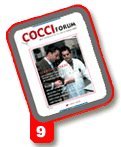Intestinal FortitudeUnderstanding the real cause of intussusception in broiler breeders leads the way to effective controlIt isn’t pretty. Birds develop an inflamed gut that folds over itself. There can be a high incidence of prolapse (the gut protrudes out of the vent ) and associated cannibalism. The term for this intestinal condition is intussusception. It tends to occur in the thin-walled lower intestine when mild enteritis causes the muscle of the intestinal wall to lose tone and spasm. Intussusception can affect birds of any age, but is usually seen in 7 to 10 week-olds. “We see the condition in laying hens and replacement pullets, but not often in broilers,” says Dr. Luciano Gobbi, a poultry veterinarian and consultant in Italy. “I recently spoke with one live production manager who said that about 25% of his flocks have problems with intussusception, which affects about 2% of birds within those flocks,” he says. In severely affected birds, intussusception usually leads to death. Milder
cases cause poor performance and lack of uniformity in the flock, he says. McCarty adds, “We usually see intussusception in flocks with a high parasite load. A hyperactive gut is also thought to be a cause.” Targets feed restriction
The real root of the problem in birds with intussusception, however, is management practices that set the stage for bacteria or parasites to build up, causing the enteritis that leads to intussusception, the veterinarians agree. The increased incidence of intussusception is in direct line with increases in feed restriction that have been implemented by breeding companies over the past decade. In replacement pullets, most cases of intussusception are seen 7 to 10 days after a period of food restriction, he says. Geneticists have, understandably, strived to improve the growth rate of birds. “But a fast-growing parent usually turns into a fat one that doesn’t lay well, so we’ve tightened the screws on feeding programs to keep hens on their ideal weight curve,” he explains. “The chicken’s intestine was designed to house a steady state of fill with feed material. If the intestines empty, the intestinal villi — vascular structures on the intestinal wall that are essential for good intestinal health — begin to die. The result is an overgrowth of bacteria and possibly other harmful microorganisms,” he says. Feed restriction also forces pullets to forage in litter, which can further compromise intestinal health. Litter material is rough and can damage the intestinal mucosa. “Further complicating the situation is the absence of antibiotics in feed,” Phillips says. “Growth-promoting antibiotics are often left out of replacement breeder feeds to help restrict bird growth, but without them, bacterial growth goes unchecked, leading to enteritis.”
Role of coccidiosisMcCarty says that some producers mistakenly believe that the mild reaction to coccidiosis vaccination, which is necessary to establish immunity, is the cause of enteritis. “But that’s not the case. The peak reaction to live coccidiosis vaccination occurs at 3 weeks of age, and intussusception doesn’t usually occur until 7 to 10 weeks,” he says. When coccidiosis is the cause of enteritis and intussusception in coccidiosis-
vaccinated birds, the more likely culprit is inadequate vaccination, McCarty says. Managing intussusceptionFor acute intussusception, the underlying enteritis has to be treated with antibiotics such as sulfas or bacitracin fed either in water or feed. Repeated problems can be alleviated by using bacitracin methylene disalicylate
or virginiamycin in the pullet feed, if permitted, during the time that intussusception is a problem. “Look at your feed pans or tracks to see if birds at the end of the line are getting sufficient feed. If not, you could
have a problem with the speed that feed is being disbursed,” he says. “Last but not least, don’t forget the water. Consumption must be about 3 pounds of water per pound of feed consumed (or 3 gallons of water for every 8 pounds of feed) to take advantage of the full caloric content of feed.” 1. Broiler Industry, August 1996. Source: CocciForum Issue No.9, Schering-Plough Animal Health. |





 © 2000 - 2021. Global Ag MediaNinguna parte de este sitio puede ser reproducida sin previa autorización.
© 2000 - 2021. Global Ag MediaNinguna parte de este sitio puede ser reproducida sin previa autorización.